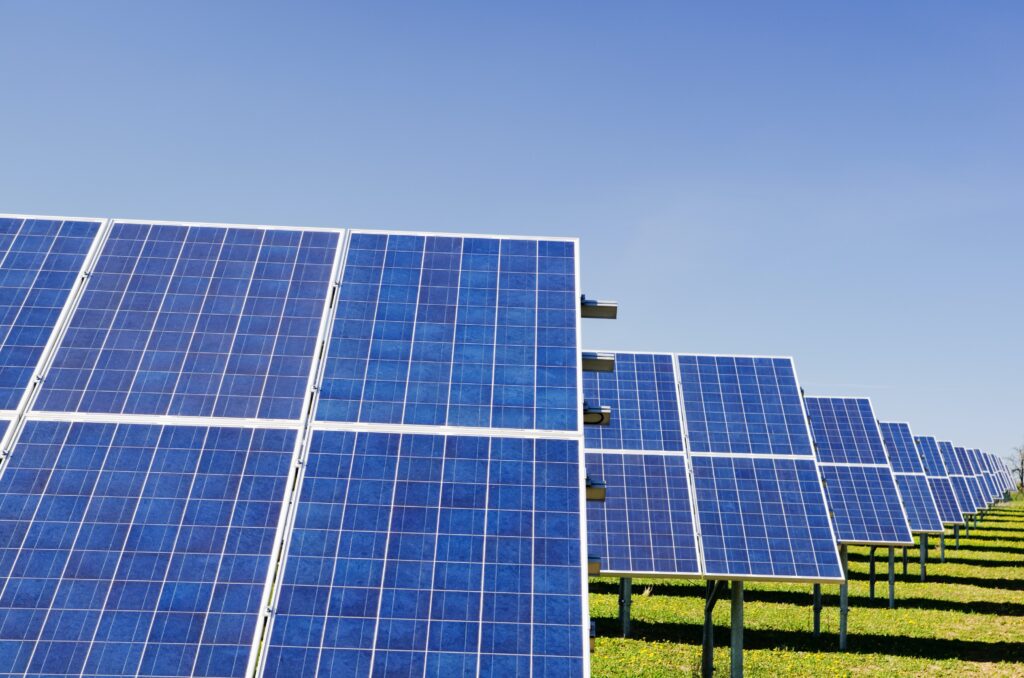In today’s rapidly evolving energy landscape, the question of how renewable energy costs measure up against those of traditional fossil fuels has become increasingly relevant. With sustainability at the forefront of many minds, the comparison of these two vital energy sources is crucial to understanding the future of our planet. By examining the costs associated with harnessing renewable energy and contrasting them with the expenses linked to fossil fuel extraction and consumption, we can gain valuable insights into the viability and potential benefits of transitioning towards a more sustainable energy future. So, let’s explore the captivating world of renewable energy costs and see how they stack up against their tried-and-true counterparts.

Check Out Our Top Eco Friendly Product Picks On Amazon Here
Cost Factors for Renewable Energy
Initial Investment Costs
When it comes to renewable energy, one of the significant cost factors is the initial investment required to set up the infrastructure. Building renewable energy facilities such as solar panels or wind turbines can be quite expensive. However, in recent years, the costs have been decreasing as technology advances and economies of scale come into play. The initial investment costs are influenced by factors such as the size of the project, the location, and the type of renewable energy source.
Operational Costs
Once the renewable energy facilities are up and running, there are ongoing operational costs to consider. These costs include expenses for monitoring and maintaining the systems, as well as the cost of fuel for biomass or geothermal energy. Operational costs vary depending on the type of renewable energy source and its specific requirements. For example, solar panels have minimal operational costs as they rely on sunlight, while wind turbines require periodic maintenance and occasional repairs.
Maintenance and Repair Costs
Another factor to consider is the maintenance and repair costs associated with renewable energy systems. While these costs can vary depending on the type of technology used, in general, they are relatively low compared to fossil fuel systems. Regular maintenance is necessary to ensure optimal performance and to detect any issues early on. By conducting routine inspections and addressing minor repairs, the overall long-term costs can be minimized.
Lifetime Costs
When evaluating the cost of renewable energy, it is important to consider the lifetime costs. This includes the initial investment, operational costs, and maintenance and repair costs over the lifespan of the system. While the initial investment may be higher compared to fossil fuel infrastructure, renewable energy systems often have lower operational and maintenance costs over time. Additionally, renewable energy technologies tend to have longer lifespans, providing a cost advantage in the long run.
Government Subsidies and Incentives
Governments around the world have recognized the importance of transitioning to renewable energy sources and have offered various subsidies and incentives to promote their adoption. These incentives can significantly reduce the overall cost of renewable energy projects. They may include tax credits, grants, feed-in tariffs, or other financial incentives. These government support mechanisms help offset the initial investment costs and make renewable energy more affordable for individuals, businesses, and communities.
Cost Factors for Fossil Fuels
Extraction and Production Costs
When it comes to fossil fuels, one of the major cost factors is the extraction and production process. Oil, gas, and coal extraction require significant investments in infrastructure, equipment, and labor. These costs can fluctuate depending on the availability and accessibility of fossil fuel reserves. Moreover, as reserves become depleted, extraction costs may rise, making fossil fuels less economically viable in the long term.
Transportation Costs
After extraction, fossil fuels need to be transported to power plants or distribution centers. This transportation can involve pipelines, tankers, or trucks, and incurs additional expenses. The longer the distance between the extraction site and the end user, the higher the transportation costs. These costs can significantly impact the overall price of fossil fuels, particularly in areas that are far from the sources of production.
Operational Costs
Once fossil fuel power plants are operational, they require regular maintenance and significant amounts of fuel to generate electricity. The operational costs of fossil fuel power plants can comprise a significant portion of their overall expenses. The reliance on fuel, such as natural gas or coal, also means that the cost of fossil fuel energy is influenced by market prices, which can be volatile and subject to geopolitical factors.
Environmental Costs
One major cost factor often overlooked in the comparison between renewable energy and fossil fuels is the environmental cost. Fossil fuel extraction and combustion contribute to air and water pollution as well as greenhouse gas emissions. These environmental costs have far-reaching effects, including damage to ecosystems, health impacts on communities, and economic consequences. The true cost of fossil fuels extends beyond financial considerations.
Health Costs
The combustion of fossil fuels can have detrimental effects on human health. The emissions from fossil fuel power plants and vehicles contribute to air pollution, leading to respiratory and cardiovascular issues. The health costs associated with exposure to pollutants can be significant and place an additional burden on healthcare systems. Transitioning to renewable energy sources can help mitigate these health costs by reducing air pollution and promoting cleaner environments.
Check Out Our Top Eco Friendly Product Picks On Amazon Here
Comparing Initial Investment Costs
Renewable Energy
The initial investment costs of renewable energy systems can vary depending on the technology and scale of the project. Solar power installations, for example, require investments in solar panels, inverters, and installation costs. Wind power projects involve purchasing and installing wind turbines and related infrastructure. While the initial costs for renewable energy systems can be higher compared to fossil fuel infrastructure, advancements in technology and increasing adoption have led to a decrease in these costs over time.
Fossil Fuels
The initial investment costs for fossil fuel infrastructure primarily revolve around the construction of power plants and extraction facilities. Oil and gas drilling rigs, coal mines, and associated equipment require significant capital investment. Additionally, fossil fuel power plants require ongoing investments for upgrades and maintenance to ensure their efficient operation. However, it is worth noting that the lifespan of fossil fuel infrastructure may be more limited compared to renewable energy systems.
Comparing Operational Costs
Renewable Energy
Renewable energy systems generally have lower operational costs compared to fossil fuel power plants. Solar power, once installed, requires minimal maintenance and no fuel costs as it relies on sunlight. Wind power systems, while requiring periodic maintenance, also have lower operational costs when compared to ongoing fuel expenses associated with fossil fuel combustion. Biomass and geothermal energy sources may have some operational costs associated with fuel or maintenance, but they often have a lower cost profile compared to fossil fuels.
Fossil Fuels
Fossil fuel power plants have substantial operational costs due to the need for a constant supply of fuel. Natural gas and coal prices can fluctuate, impacting the overall cost of electricity generation. Additionally, fossil fuel combustion generates emissions that need to be managed, which adds to the operational costs. The ongoing reliance on fossil fuels for power generation contributes to the overall expense of fossil fuel-based energy systems.

Comparing Maintenance and Repair Costs
Renewable Energy
Renewable energy systems generally have lower maintenance and repair costs compared to fossil fuel infrastructure. Solar power installations, for instance, require minimal maintenance since solar panels have no moving parts. Wind turbines may require periodic inspections and maintenance to ensure optimal performance and address any issues. However, in general, the maintenance and repair costs for renewable energy systems are relatively low when compared to the ongoing maintenance and repair needs of fossil fuel power plants.
Fossil Fuels
The maintenance and repair costs associated with fossil fuel power plants can be significant due to the complexity and size of the infrastructure. Regular maintenance activities are necessary to ensure the efficient operation of boilers, turbines, and other components. Additionally, fossil fuel infrastructure can experience breakdowns and malfunctions that require costly repairs. These maintenance and repair costs contribute to the overall expense of fossil fuel-based energy systems.
Comparing Lifetime Costs
Renewable Energy
When considering the lifetime costs of renewable energy systems, it is essential to analyze the initial investment, operational costs, and maintenance and repair expenses over the lifespan of the infrastructure. While renewable energy systems may have higher initial investment costs compared to fossil fuels, they often have lower operational costs and require less maintenance. This results in lower lifetime costs for renewable energy systems, making them a favorable option in the long term.
Fossil Fuels
Fossil fuel infrastructure has its own set of lifetime costs, which include initial investment, ongoing operational costs, and maintenance and repair expenses. While the initial investment costs for fossil fuel infrastructure may be lower compared to some renewable energy systems, the operational and maintenance costs can be higher. Furthermore, the lifespan of fossil fuel infrastructure is limited compared to many renewable energy systems, leading to the need for costly replacements or upgrades.

Government Subsidies and Incentives
Renewable Energy
Governments worldwide have recognized the importance of promoting renewable energy and have introduced various subsidies and incentives to support its adoption. These government programs help offset the initial investment costs of renewable energy systems, making them more financially attractive. Examples of such incentives include tax credits, feed-in tariffs, grants, and funding for research and development. Government support helps to accelerate the transition to renewable energy by reducing the financial burden on individuals, businesses, and communities.
Fossil Fuels
While governments have historically provided support to the fossil fuel industry, there has been a growing awareness of the environmental and health impacts associated with fossil fuels. In recent years, some governments have begun to reduce or phase out subsidies for fossil fuels to encourage a shift towards cleaner alternatives. However, it is worth noting that fossil fuel subsidies still exist in many countries, despite the overall trend towards renewable energy promotion.
Environmental Costs
Renewable Energy
One of the significant advantages of renewable energy sources is their lower environmental costs compared to fossil fuels. Solar, wind, and hydroelectric power produce electricity without generating greenhouse gas emissions or air pollutants. This reduces the negative impact on the environment, including air pollution, water contamination, and climate change. By transitioning to renewable energy, we can mitigate these environmental costs and contribute to a more sustainable future.
Fossil Fuels
Fossil fuels have substantial environmental costs associated with their extraction, transportation, and combustion processes. The extraction of fossil fuels often involves disruptive practices like drilling, mining, and fracking, which can damage ecosystems and habitats. The combustion of fossil fuels releases greenhouse gas emissions, contributing to climate change. Additionally, pollutants from fossil fuel combustion, such as sulfur dioxide and nitrogen oxides, contribute to air pollution and its associated health impacts. These environmental costs are a significant drawback of using fossil fuels for energy.

Health Costs
Renewable Energy
Renewable energy sources offer health benefits due to their clean and emissions-free nature. By reducing air pollution and greenhouse gas emissions, renewable energy helps improve air quality, thereby reducing respiratory and cardiovascular health issues. The transition to renewable energy can lead to healthier communities and a decreased burden on healthcare systems. Investing in renewable energy is not only economically beneficial but also a crucial aspect of promoting public health and wellbeing.
Fossil Fuels
The combustion of fossil fuels has serious health consequences. Air pollution from fossil fuel combustion contributes to respiratory and cardiovascular diseases, including asthma, bronchitis, and heart attacks. The emission of pollutants such as particulate matter, sulfur dioxide, and nitrogen oxides poses a significant health risk to communities living near fossil fuel power plants and traffic-heavy areas. The health costs associated with fossil fuels are substantial and can have long-term impacts on individuals and communities.
Overall Comparison
Cost Per Unit of Energy
When comparing the overall costs of renewable energy systems and fossil fuels, it is essential to consider the cost per unit of energy produced. While the initial investment costs for renewable energy may be higher, the lower operational and maintenance costs, along with the absence of fuel costs, can result in competitive or even lower overall costs compared to fossil fuel-based energy systems. Additionally, as renewable energy costs continue to decline and fossil fuel prices fluctuate, the cost advantage of renewable energy is expected to further increase.
Future Projections
The future of renewable energy costs looks promising, with projections suggesting continued cost reductions and increased efficiency. Technological advancements, economies of scale, and improved manufacturing processes are driving down the initial investment costs of renewable energy systems. As more countries and communities embrace renewable energy, the industry will continue to evolve, bringing down operational and maintenance costs further. Moreover, renewable energy sources are not reliant on finite and fluctuating fuel prices, making them a stable and sustainable choice for the future.
In conclusion, while there are various cost factors to consider when comparing renewable energy to fossil fuels, renewable energy sources hold great potential for long-term cost savings. The initial investment costs may be higher, but lower operational, maintenance, and lifetime costs, combined with government subsidies and incentives, make renewable energy increasingly competitive. Additionally, the environmental and health costs associated with fossil fuels make renewable energy a more sustainable and responsible choice. As technology advances and economies of scale come into play, the cost advantages of renewable energy are expected to increase further, making it the clear choice for a cleaner and more affordable energy future.
Check Out Our Top Eco Friendly Product Picks On Amazon Here




